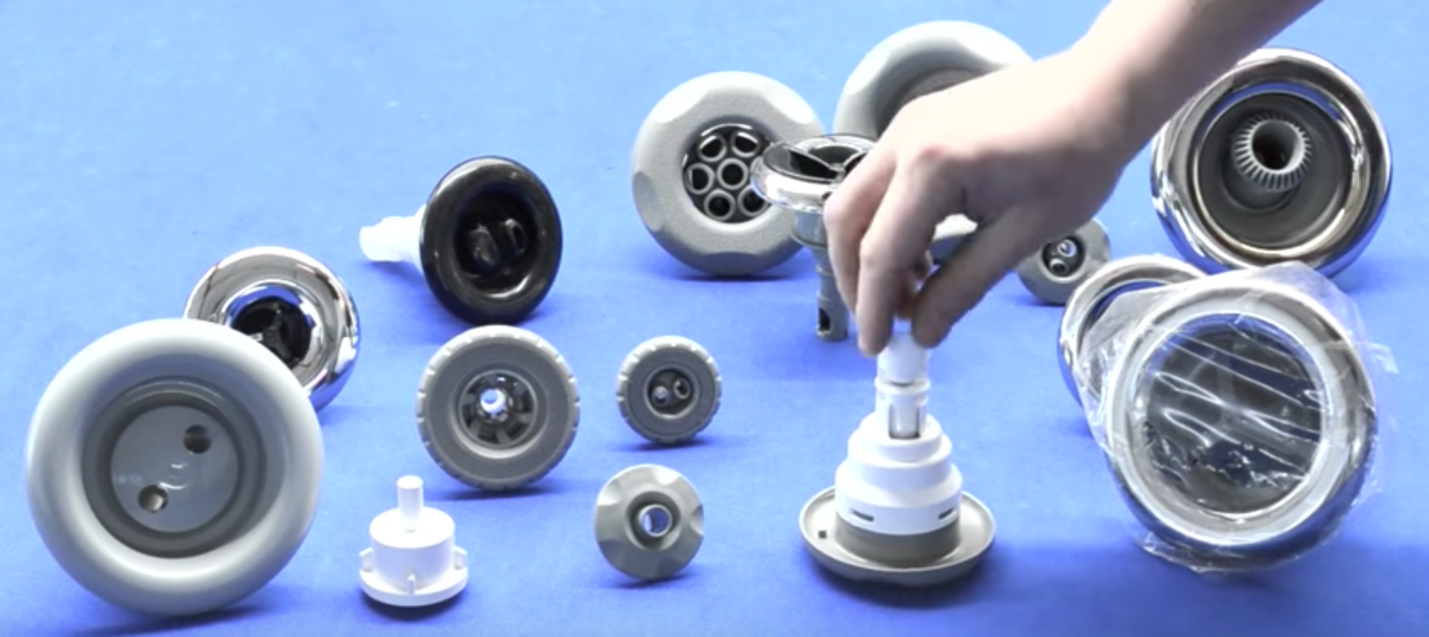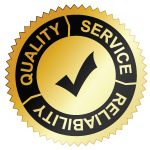Chapters:
Chapter 3 Topics
3-T: Jets and Hydrotherapy

There are over 100 kinds of jets, some good, some bad. But there’s way more to it than that.
What’s a hot tub without jets? This category is important enough to spill some ink on the subject if you care to be informed. Here are some things to consider:
- Number of Jets
First time buyers tend to pay way too much attention to the jet count. Much of the artfully laid out jetting nowadays is designed more for “wow’ appeal than for functional purposes. Although we do offer spa models with loads of jets for those who want them, our records show that second time buyers almost always go for something with fewer jets next time around.
2. Jet placement
What’s the point of having lots of jets if they aren’t strategically placed for effective and soothing massage? Some spa models have jets placed in spots that don’t make sense – they either miss your body completely or even worse, are placed at pressure points that are actually annoying. Why pay for jets that aren’t being used and appreciated?
- Jet over-clustering

Jetting like this will only create a current that causes you to levitate up and away from the seat
Some might imagine that a seat with 50 jets would give you ten times more massage than one with only five jets. But if there are too many jets pushing against you at the same time, you lose the massage effect. Instead of feeling fifty pressure points against your back, all you feel is a general current that pushes you away – especially if the jets are placed too closely together.
A few strategically placed jets may actually offer a better massage than a showerhead effect.
- Does Every Seat Really Need to Be a Massage Seat?
When you’re in a hot tub alone, it’s great to close your eyes and really focus on the massage. When two are in a tub, it’s nice to have a couple of very comfortable, nicely jetted seats to sit in and chat while enjoying a massage. But when the hot tub is full of people, nobody’s there for therapeutic massage – they just want to socialize. The more people in a tub, the less important jetting becomes. Hot swirling water is usually good enough for group tubbing – not every seat has to offer an amazing jet cluster.
If budget is an issue, you can get away with a simpler tub that takes this into consideration. Instead of having eight super-jetted seats, you might consider choosing a simpler spa that only has a couple of well-jetted seats, with more modestly-jetted “overflow seating” for guests. That way you can save money, stay with a simpler system and entertain guests without compromising your own comfort.
If massage is important to you, make sure you have at least one or two well-jetted seats, then ask yourself if that would be good enough? Would you really need more than that?
- Adjustable Jets
Some jets can be turned on and off on a gradient fade by dialing them clockwise and counterclockwise, while others are either on or off, all-or-nothing, with nothing in between.
Some hot tub systems have a diverter valve, where you can adjust the water flow from one section of the tub to another, or leave it half-way and share each section shares the pressure at 50%.
Some models have air valves along the sill of a hot tub, which adjusts how much air is introduced through the jets in different sections of the hot tub. The more air, the stronger the massage because the bubbles increase the friction against your skin.
- Stainless Steel Jets
Stainless steel jets are no better than regular plastic ones. They’re exactly the same jet, and the only difference is cosmetic. All jets are made of plastic, and the “stainless steel” part of a jet is only a metal cap clamped over the plastic to make it look pretty.
So don’t turn your nose up at bland-looking plastic jets, as they work just as well, and you can’t see them underwater when the tub is in use anyways. The only time you’ll be able to appreciate shiny jets is when the tub is empty.
- Flapping/buzzing/spinning/pulsating jets
Much ado is made on the showroom floor about the “action” of certain jets, but the truth is that most of the hydrotherapy benefits simply come from warm water streaming onto your back, not so much from the gushing/throbbing/whirling motion of the water coming out of those jets.
In fact, the original “Jacuzzi” didn’t have any jets – it was nothing more than a device put into a warm bathtub to create water movement, hence the original term “whirlpool”. It was specifically intended to offer hydrotherapy as a way to provide pain relief for a suffering family member. And it worked wonders, without any fancy jet action (see 1-C: Health Benefits)
Of course, an intelligently-jetted hot tub is certainly worth enjoying if massage is important to you. However, I’ve discovered that most people who get a hot tub for hydrotherapy reasons usually end up just enjoying a warm soak in a hot tub, often without even turning on the jets. Just being in moving warm water is mostly what does the trick.






